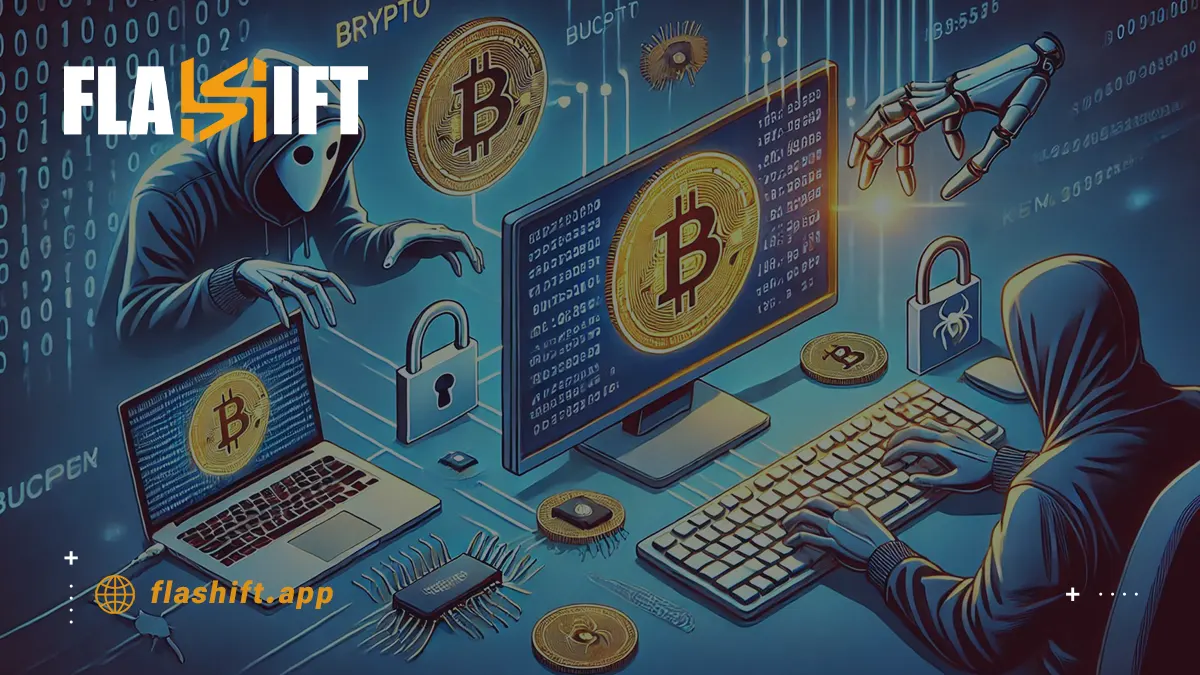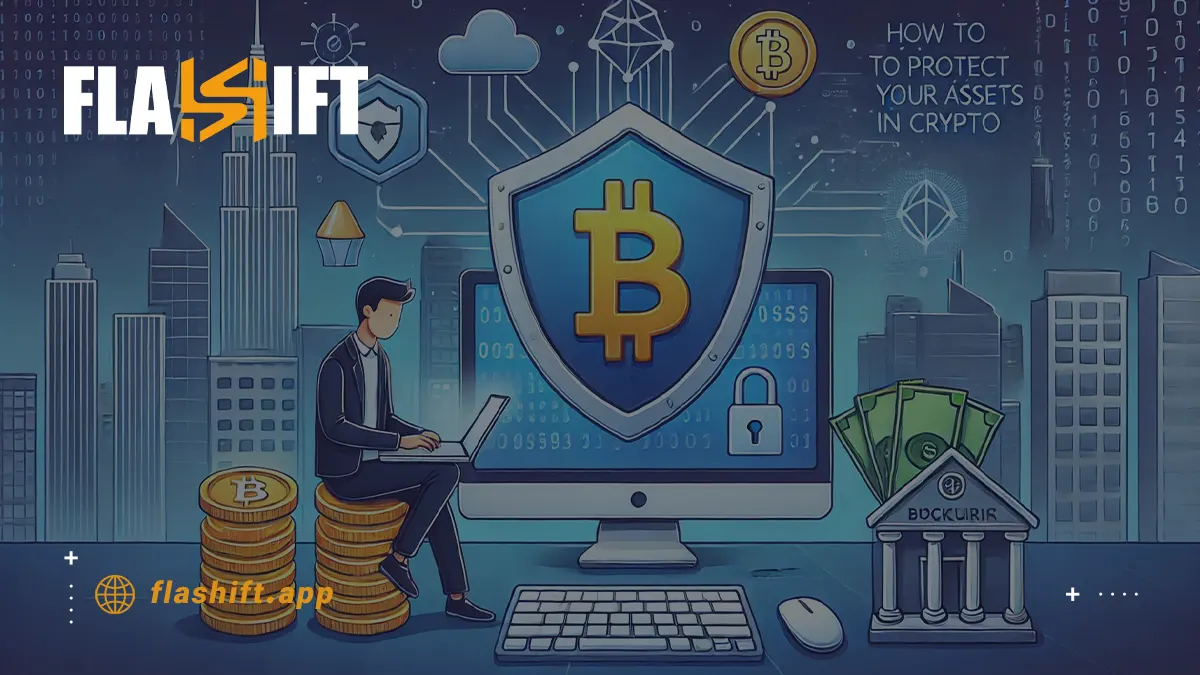- The Rise of Centralized Cryptocurrency Exchanges
- Centralized vs Decentralized Exchanges
- Notable Exchange Hacks: A Chronological Account
- Common Vulnerabilities Exploited by Hackers
- Impact on Users: Financial and Emotional Consequences
- Lessons Learned: How to Protect Your Assets
- The Future of Exchange Security: Moving Towards Decentralization
- FAQ
Centralized cryptocurrency exchanges | You’re ready to trade crypto, but there’s a choice that can affect everything: which exchange will you use? Centralised platforms promise ease, liquidity and fiat-on-ramps — but in 2025 they also carry regulatory, custody and control trade-offs you need to understand.
Cryptocurrencies were born out of a vision for decentralized financial systems, yet the convenience of centralized cryptocurrency exchanges (CEXs) has made them a dominant force in the industry. These platforms serve as vital bridges between traditional finance and blockchain-based assets, enabling millions to buy, sell, and store digital currencies. However, their centralized nature has also made them lucrative targets for cybercriminals, resulting in some of the most devastating financial breaches in modern history.
This article will walk you through how centralised crypto exchanges work today, what’s changed in 2025, and how to pick the right one for your swaps on Flashift with confidence.
The Rise of Centralized Cryptocurrency Exchanges
Centralized cryptocurrency exchanges have become the backbone of the crypto ecosystem, serving as a smoothed gateway to buy, sell, and trade digital assets. Offering high liquidity, ease of use, and necessary services like wallet management, they have opened up cryptocurrency to a global audience. These platforms act as trusted intermediaries, connecting buyers and sellers with each other, and enabling fast transactions.
However, despite this pivotal role, their centralized nature has led to great risks. The hacks of several centralized cryptocurrency exchanges over the years have led to huge losses among users’ funds and sometimes the total closure of such crypto exchanges. These cases have caused a stir not only in user confidence but also showed some real vulnerabilities in a centralized system whereby one point of failure might lead to a complete collapse.
As we explore the evolution of centralized exchanges, their successes and shortcomings offer crucial insights into the industry’s journey, shaping ongoing debates about security, decentralization, and the future of cryptocurrency trading platforms.
Try Flashift! Swap Bitcoin to Ethereum
2025 Update – Centralised exchange trends
As we move through 2025, centralised exchanges (CEXs) remain dominant despite increased DeFi competition. For example, one recent tracker reported that leading CEXs control close to 40% of global spot volume, and new regulatory burdens are reshaping how they operate globally. They are improving fiat on-ramps, launch-pad services, and token listing processes, but also face rising compliance costs, audit demands and the risk of institutional failures.
Centralized vs Decentralized Exchanges
Centralized exchanges (CEXs) and decentralized exchanges (DEXs) each serve distinct needs in the crypto ecosystem. CEXs like Binance, Coinbase, and Kraken offer user-friendly interfaces, high liquidity, quick transaction speeds, and convenient fiat-to-crypto on‑ramps. However, they require users to trust the platform with custody of funds, face centralized security risks, and often involve KYC/AML procedures .
DEXs, on the other hand, empower users with full control over their private keys, enhanced privacy, and resilience against censorship and centralized failure. They operate via smart contracts or automated market makers (AMMs), eliminating intermediaries . Yet, they face drawbacks like lower liquidity, slower transaction speeds due to blockchain confirmation, unfamiliar interfaces for beginners, and exposure to smart‑contract vulnerabilities. The choice between CEX and DEX ultimately boils down to a trade-off between convenience and control, and depends on the user’s comfort with custody risk, regulatory compliance, and desired ease of use.
| Feature | Centralized Exchange (CEX) | Decentralized Exchange (DEX) |
|---|---|---|
| Custody | Platform holds users’ assets (custodial) | Users keep control of private keys (non‑custodial) |
| Liquidity | High, deep order books; tight spreads | Generally lower; can lead to slippage |
| Ease of Use | Intuitive UI, reliable support, fiat integration | Steeper learning curve, requires wallet knowledge |
| Security Risks | Prone to exchange hacks, single point of failure | Smart contract bugs, faster peer-to-peer but less platform risk |
| Privacy & KYC | KYC/AML mandatory, identity tied to funds | Pseudonymous, no KYC required |
| Transaction Speed | Instant internal execution; fast trading | Dependent on blockchain speed, can be slower |
| Fees | Trading & withdrawal fees; exchange-dependent | Lower fees; but gas costs apply |
| Customer Support | Dedicated teams, responsive help channels | None—community-driven support only |
| Regulatory Compliance | Subject to licensing, audits, and oversight | Largely unregulated; operates in gray areas |
| Asset Variety | Wide selection, but some tokens restricted | Broad access, including niche tokens |
Read More: The Complete Guide to DEX Trading: How to Use Decentralized Exchanges
Notable Exchange Hacks: A Chronological Account
Centralized cryptocurrency exchanges have long been the target of cybercriminals, accounting for some of the most significant financial breaches in the digital era. Each high-profile hack that has taken place has exposed weaknesses and acted as a cautionary tale for the crypto industry. Here’s a chronological look at some of the most notorious exchange hacks and collapses that framed the landscape of cryptocurrency security:
-
Mt. Gox (2014)
The Mt. Gox hack is among the earliest and most devastating in crypto history. At one point, it handled more than 70% of global Bitcoin transactions before a catastrophic breach where 850,000 BTC was lost, worth some $450 million at that time. This attack occurred due to poor security practices and bad internal management. It saw the bankruptcy of the exchange and furthered the erosion of public trust in cryptocurrency.
-
Bitfinex (2016)
In 2016, one of the then-largest exchanges, Bitfinex, was targeted in an advanced attack, which resulted in the theft of about 120,000 BTC, worth $72 million at that time. The very multi-signature security system designed to protect funds was exploited in that attack. While Bitfinex implemented a highly controversial token repayment scheme to reimburse users, the incident showed the limitations of centralized security measures.
-
Coincheck (2018)
The Coincheck hack is one of the largest crypto thefts ever; the hackers made off with $534 million in NEM tokens. It was attributed to basic security measures not being employed by Coincheck, like keeping the assets cold for storage. While it ultimately reimbursed the users affected, the incident underlined one important fact: even as the industry matured, the use of centralized exchanges came with very real risks.
-
FTX Collapse (2022)
Although not a hack, the collapse of FTX was an event of great proportion, showing how big the risk of mismanagement and lack of transparency by centralized exchanges is. It went from being a trustful exchange to declaring bankruptcy after proof of financial mismanagement and misuse of user funds was found. That brought a multibillion-dollar loss for investors and stranded thousands who could not retrieve their assets, thus sending ripples into the crypto space.
Lessons from the Past
Each of these events has left an indelible mark on the cryptocurrency ecosystem, highlighting the critical need for improved security, transparency, and regulatory oversight. As centralized cryptocurrency exchanges evolve, the lessons from these failures serve as a roadmap for creating a safer and more resilient industry.
Common Vulnerabilities Exploited by Hackers
Centralized cryptocurrency exchanges, while integral to the adoption of digital assets, are frequent targets for cybercriminals due to their vast holdings and centralized architecture. Hackers often exploit systemic flaws and human errors to breach these platforms. Understanding these vulnerabilities is crucial for both exchanges and users to mitigate risks.

-
Inadequate Hot Wallet Protections
Hot wallets, used for real-time transactions, are constantly connected to the internet, making them prime targets for attackers. Many breaches, such as the Coincheck hack in 2018, occurred because exchanges failed to implement robust hot wallet protections, such as multi-signature security or segregated funds.
- How Hackers Exploit This: Cybercriminals gain unauthorized access to hot wallets through weak encryption or compromised private keys.
- Prevention Tips: Exchanges should limit funds stored in hot wallets, prioritize cold storage for the majority of assets, and use multi-signature technology to enhance security.
Read More: Hardware wallets vs software wallets: Which one is the best for using swap aggregators?
-
Phishing Attacks and Social Engineering
Phishing remains a highly effective tactic for stealing credentials from both exchange staff and users. By impersonating legitimate platforms, hackers trick victims into revealing sensitive information such as passwords or two-factor authentication (2FA) codes.
- How Hackers Exploit This: Fake websites, emails, or messages lure users to input login details or download malware.
- Prevention Tips: Users should verify URLs, enable hardware-based 2FA, and avoid clicking on unsolicited links. Exchanges must educate users and implement AI-driven phishing detection systems.
-
Insider Threats
Some of the most damaging breaches have involved insiders—employees with access to sensitive systems—misusing their privileges. In the case of FTX’s collapse, for example, internal mismanagement played a significant role in the loss of user funds.
- How Hackers Exploit This: Insiders may leak credentials, disable security measures, or directly siphon funds.
- Prevention Tips: Exchanges should implement strict access controls, monitor employee activity, and conduct regular audits to detect suspicious behavior.
-
Exploitation of Vulnerable Code and APIs
Hackers often target poorly written code or unsecured APIs to gain unauthorized access to exchange systems. This was evident in the Bitfinex hack (2016), where attackers exploited the exchange’s multi-signature wallet setup.
- How Hackers Exploit This: Attackers find and exploit bugs or vulnerabilities in software or application interfaces.
- Prevention Tips: Regular security audits, bug bounties, and using industry-standard encryption can minimize risks.
-
Lack of Regulatory Compliance and Oversight
Exchanges operating in jurisdictions with lax or unclear regulations often neglect essential security protocols, increasing their vulnerability to attacks.
- How Hackers Exploit This: Weak regulatory oversight allows poor security practices to persist unnoticed.
- Prevention Tips: Exchanges should adhere to global best practices, including Know Your Customer (KYC) and Anti-Money Laundering (AML) protocols, while users should prioritize platforms with transparent regulatory compliance.
How to Protect Cryptocurrency from Exchange Hacks
While exchanges play a significant role in ensuring security, users can take proactive steps to protect their assets:
- Use Hardware Wallets: Store cryptocurrencies offline in cold wallets for enhanced security.
- Enable Multi-Layered Security: Activate hardware-based 2FA and strong, unique passwords.
- Monitor Exchange Reputation: Choose platforms with a history of transparency, insurance coverage, and rigorous security measures.
- Diversify Storage: Avoid storing all assets on a single platform to minimize exposure.
By addressing these vulnerabilities, both exchanges and users can significantly reduce the risk of falling victim to the next major hack.
Read More: Crypto Portfolio: How to Build a Diversified cryptocurrency portfolio
Impact on Users: Financial and Emotional Consequences
The aftermath of centralized cryptocurrency exchange hacks and crypto exchange closures extends far beyond monetary losses. For the millions of users who entrust these platforms with their funds, these events bring devastating financial and emotional consequences, shaking their faith in the industry.
-
Financial Devastation
One of the most immediate impacts of user fund losses in crypto hacks is the financial hardship suffered by affected individuals. In high-profile cases like the Mt. Gox (2014) and Coincheck (2018) hacks, users lost life savings, investments, and, in some cases, their primary sources of income.
- Case in Point: Following the Mt. Gox hack, thousands of users reported losing significant amounts of Bitcoin with little to no recourse. Many have yet to see reimbursement a decade later, despite ongoing legal proceedings.
-
Emotional Toll on Users
The impact of exchange hacks on crypto users often goes beyond finances. Victims frequently report feelings of betrayal, frustration, and despair as they grapple with the consequences of losing their funds.
- User Stories:
- A small-business owner who stored operational funds in a cryptocurrency exchange described the emotional devastation of losing their assets in the Bitfinex hack, likening it to “watching your savings evaporate overnight.”
- First-time investors affected by the FTX collapse in 2022 shared stories of being misled by a trusted brand, leading to both financial ruin and a loss of confidence in cryptocurrency altogether.
Read More: The Rise of DEX Trading: What Every Crypto User Should Know in 2025
-
Broader Implications for Trust in the Crypto Industry
Every major hack or closure erodes public trust in centralized platforms and, by extension, the cryptocurrency industry as a whole. These incidents highlight the fragility of centralized systems and amplify fears about the security of digital assets.
- Loss of Adoption Momentum: When new or inexperienced users fall victim to hacks, they are less likely to reengage with the crypto ecosystem, slowing overall adoption.
- Regulatory Backlash: Incidents like the FTX collapse have prompted governments and regulators to impose stricter oversight on crypto exchanges, which, while necessary, can also stifle innovation.
The Need for Enhanced Cryptocurrency Security Measures
To restore and maintain trust, centralized exchanges must implement stringent cryptocurrency security measures and foster transparency. Users, too, must take proactive steps to protect their funds, such as utilizing cold storage and diversifying holdings across multiple platforms.
The impact of exchange hacks on crypto users serves as a stark reminder of the risks involved in digital asset trading. By learning from these stories and prioritizing security, the industry can rebuild trust and pave the way for a more resilient future.
What to check before you select a centralised exchange
In 2025 the list of must-check items has expanded:
(1) Is the platform licensed and regulated in your region?
(2) How strong is its custody model — are user assets segregated from company assets?
(3) Does it support easy withdrawals?
(4) What is its listing policy and token delisting history?
(5) How transparent is its audit, volume and security track-record?
Skipping these checks can expose you to freeze-outs, delistings or regulatory closures.
Lessons Learned: How to Protect Your Assets
The history of major crypto exchange failures underscores a vital truth: safeguarding your cryptocurrency begins with taking personal responsibility for its security. While centralized exchanges provide convenience, they also pose significant risks, as evidenced by recurring breaches and fund losses. By adopting robust cryptocurrency security measures, users can significantly mitigate these risks and protect their assets.

-
Prioritize Cold Storage with Hardware Wallets
Storing cryptocurrencies in a hardware wallet—a device that keeps private keys offline—is one of the most effective ways to secure digital assets. Transfer the majority of your holdings to a hardware wallet and only keep a small portion in exchange wallets for trading purposes.
-
Enable Two-Factor Authentication (2FA)
Two-factor authentication adds an extra layer of security by requiring a secondary verification method to access accounts. Use hardware-based 2FA tools like YubiKey for added protection instead of SMS-based authentication, which can be vulnerable to SIM-swapping attacks.
-
Diversify Your Storage
Avoid placing all your assets in a single exchange or wallet. Diversification minimizes the impact of a potential breach. Distribute your assets across multiple trusted platforms and wallets, combining hot and cold storage solutions.
-
Be Vigilant Against Phishing and Scams
Phishing attacks remain one of the most common ways users lose access to their crypto accounts. Verify URLs before entering login information, avoid clicking on unsolicited links, and keep your antivirus software updated.
-
Research Exchange Security and Reputation
Not all exchanges are created equal, and some have a better track record of securing user funds than others. Choose exchanges with insurance policies, rigorous security protocols, and transparent operations. Look for platforms that publicly disclose their use of cold storage, multi-signature wallets, and regular audits.
-
Monitor and Limit Exchange Use
Use centralized exchanges only for transactions and not as long-term storage solutions. Withdraw your funds immediately after completing trades and keep them in your personal wallet.
-
Stay Updated on Security Trends
The crypto industry evolves rapidly, and staying informed about the latest threats and protective measures is essential. Follow reputable crypto security blogs, participate in community discussions, and regularly review the history of major crypto exchange failures to identify patterns and avoid repeating past mistakes.
The Path to Safer Crypto Ownership
While centralized exchanges are essential to the crypto ecosystem, their vulnerabilities have repeatedly demonstrated the need for individual vigilance. By implementing these cryptocurrency security measures, users can minimize risks, protect their investments, and navigate the crypto landscape with confidence.
Read More: Best Cross-Chain Swap Platforms in 2025: Symbiosis, 1inch, Li.Fi, and Rango
The Future of Exchange Security: Moving Towards Decentralization
Centralized cryptocurrency exchange hacks have forced a movement towards decentralized exchanges that grant the owner access to their private keys while trading directly through blockchain systems. With no centralized wallet to store funds, DEXs greatly reduce the likelihood of massive breaches and are more transparent, thanks to immutable transaction records. The decentralized model makes up for the major chinks in the armor, which were exploited in hacks like Mt. Gox and Coincheck.
Even with these advantages, DEXs still struggle with scalability, liquidity, and ease of use that makes centralized platforms more appealing to many traders at the moment. However, continuous development in DeFi and blockchain technology is closing these gaps. In time, this might just make DEXs the way to go with trading-as secure and transparent, it will be completely in line with the decentralized principles of cryptocurrency.
FAQ
1. What are centralized cryptocurrency exchanges (CEXs)?
Centralized exchanges are platforms where users trade cryptocurrencies through a third-party service, which controls the funds and facilitates transactions.
2. What were some major crypto exchange hacks?
Notable hacks include Mt. Gox (2014) with 850,000 BTC lost, Bitfinex (2016) losing 120,000 BTC, Coincheck (2018) with $534 million stolen, and the FTX collapse (2022), where billions in user funds were lost.
3. How do hackers target centralized exchanges?
Hackers exploit weak security measures, such as inadequate hot wallet protection, phishing attacks, and sometimes insider threats, to gain access to user funds.
4. How can users protect their crypto assets?
Users can protect their assets by using hardware wallets, enabling two-factor authentication, diversifying holdings, and avoiding phishing scams.
5. What does the future hold for crypto exchange security?
The future may see a shift towards decentralized exchanges (DEXs) that reduce risks by giving users control of their funds and reducing reliance on centralized platforms.








